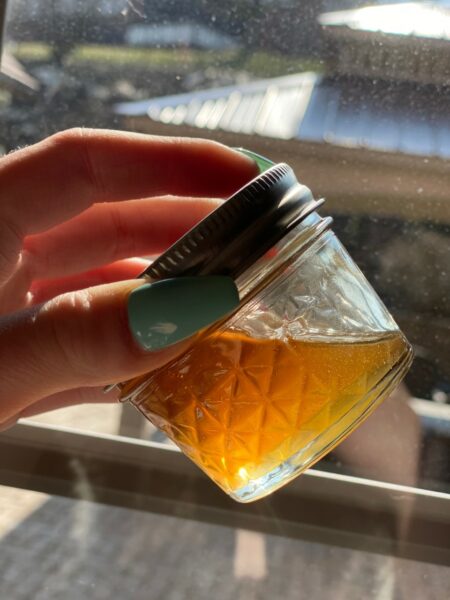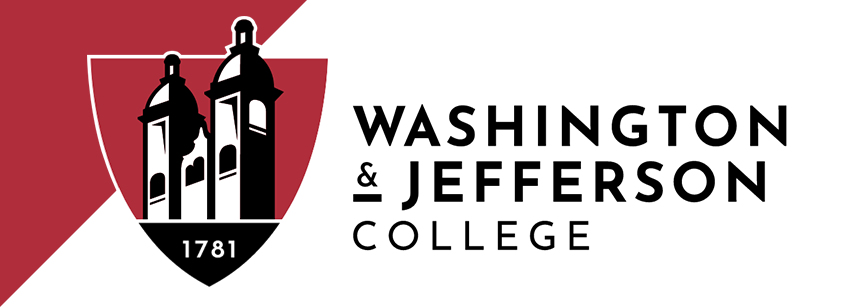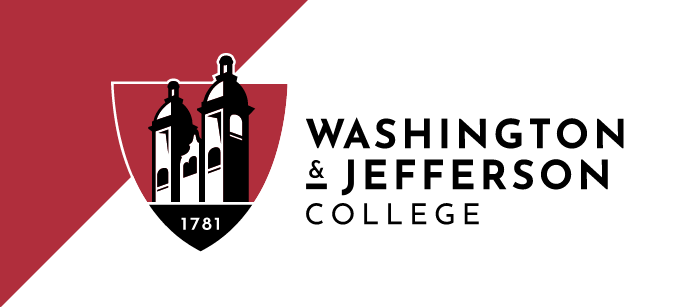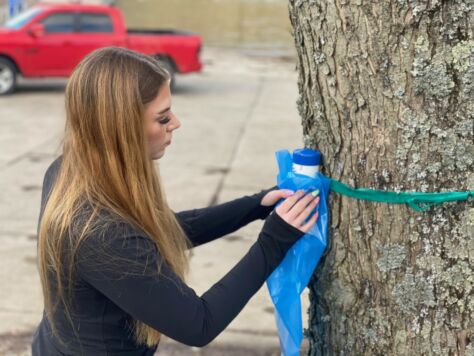WASHINGTON, PA (March 24, 2021) — When you think about maple syrup, a college campus probably isn’t the first thing that comes to mind. But students in Associate Professor of Biology Jason Kilgore’s Forest Ecology course see their campus landscape as an outdoor classroom, and, if maple trees are there, maple syrup can be made.
As students learned about tree anatomy and physiology, they used maple trees as models for understanding why certain types of trees are tapped for sap, which is often boiled to make syrup. During Professor Kilgore’s lab, eight on-campus students and two remote students investigated the differences in sucrose concentration from three species of maple trees found in W&J’s Campus Arboretum.
“While I knew syrup came from trees, I always thought of it as something you buy at the store. I never thought about actually tapping a tree at home or on campus. I was amazed at how quickly the sap came out of the trees and how much sap you need to boil down to get syrup,” said Kiera O’Neil ’21.
On-campus students chose two sugar maples on the east side of Old Main and two Norway maples, one near the new Hammock Grove and the other on the Wade property east of East Alley, to tap and collect sap. After drilling small holes into the trees, students collected the sap for nine days before removing the taps as tree buds were beginning to swell.

Professor Kilgore shipped supplies and collection systems to his two remote students so they could tap their own maple trees. Bri Hoffman ’23 tapped a tree on a family friend’s property and boiled down her sap to produce about 0.5 liters of delicious maple syrup. Based on the sucrose content of her tree’s sap, she would have to boil about 25 quarts, or just over six gallons, of sap to get one quart of syrup. Using an outdoor propane burner, Bri boiled the sap for five hours to get that delicious and hard-earned syrup.
“This project helped students see the interaction of weather (cold nights and warm days) and anatomy in maples; now they understand the investment of resources required to produce real maple syrup. I suspect that they appreciate the cost and value in real maple syrup, as well,” Professor Kilgore said.
This lab also provided valuable experience for students preparing for environmentally-focused careers.
“I am an environmental science major, so this lab was very fun for me. It was great to be able to join the knowledge of how trees transport nutrients with some field-based skills such as using a drill and measuring tree diameter in this lab,” O’Neil said. “I have a position as an Allegheny County park ranger after I graduate, so I know I will be able to use these skills in the future.”
About Washington & Jefferson College
Washington & Jefferson College, proudly located in Washington, Pa., is a historic liberal arts college founded in 1781 that values ethical leadership, professional readiness, and inclusive communities. Our highly customized and intellectually engaging student experience develops professionals of uncommon integrity to lead in an ever-changing world. For more information about W&J, visit washjeff.dev, or call 888-W-AND-JAY.


